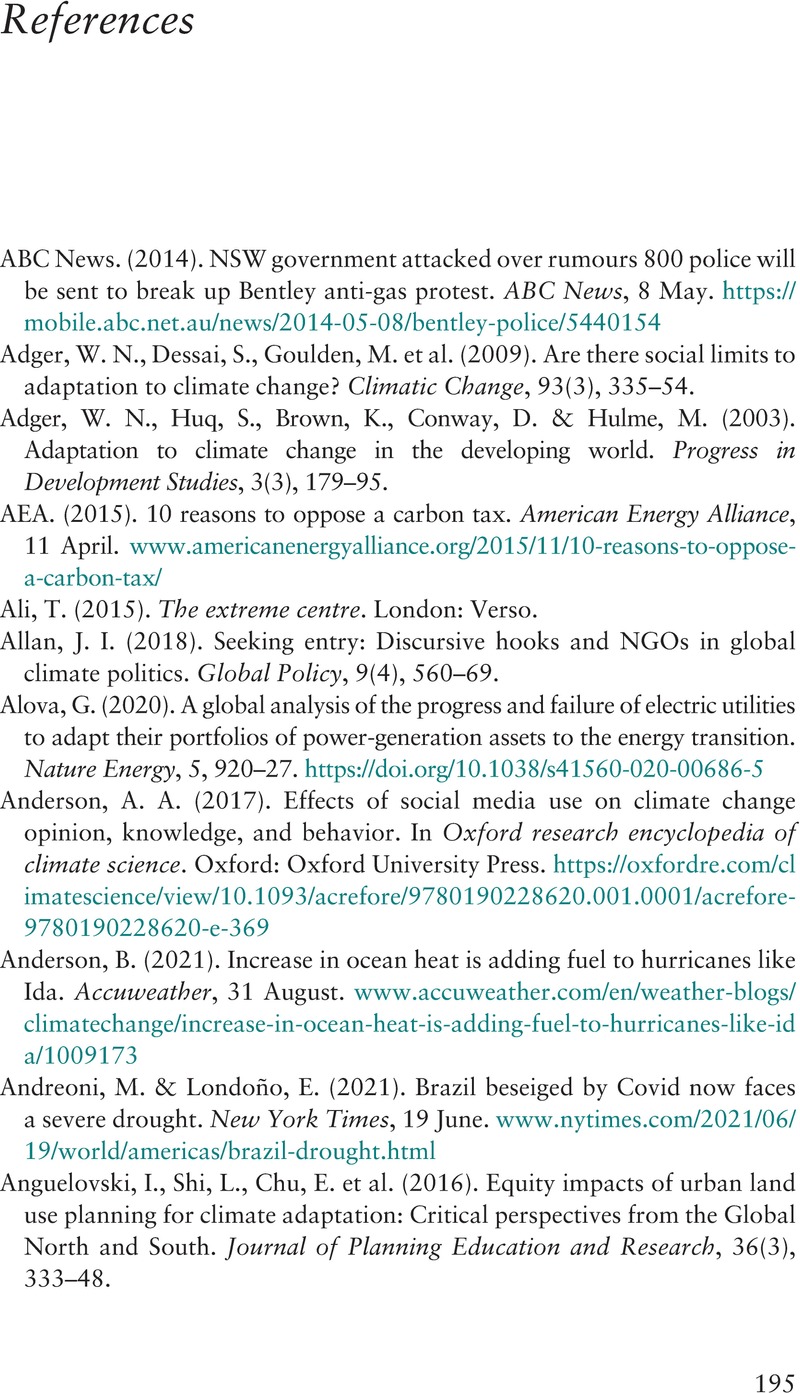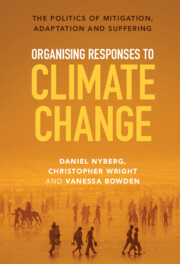Book contents
- Organising Responses to Climate Change
- Organising Responses to Climate Change
- Copyright page
- Contents
- Figures
- Tables
- Acknowledgements
- Part I The Politics of Climate Change
- Part II The Politics of Climate Mitigation
- Part III The Politics of Climate Adaptation
- Part IV The Politics of Climate Suffering
- Part V The Politics of Climate Futures
- References
- Index
- References
References
Published online by Cambridge University Press: 15 September 2022
- Organising Responses to Climate Change
- Organising Responses to Climate Change
- Copyright page
- Contents
- Figures
- Tables
- Acknowledgements
- Part I The Politics of Climate Change
- Part II The Politics of Climate Mitigation
- Part III The Politics of Climate Adaptation
- Part IV The Politics of Climate Suffering
- Part V The Politics of Climate Futures
- References
- Index
- References
Summary

- Type
- Chapter
- Information
- Organising Responses to Climate ChangeThe Politics of Mitigation, Adaptation and Suffering, pp. 195 - 235Publisher: Cambridge University PressPrint publication year: 2022

